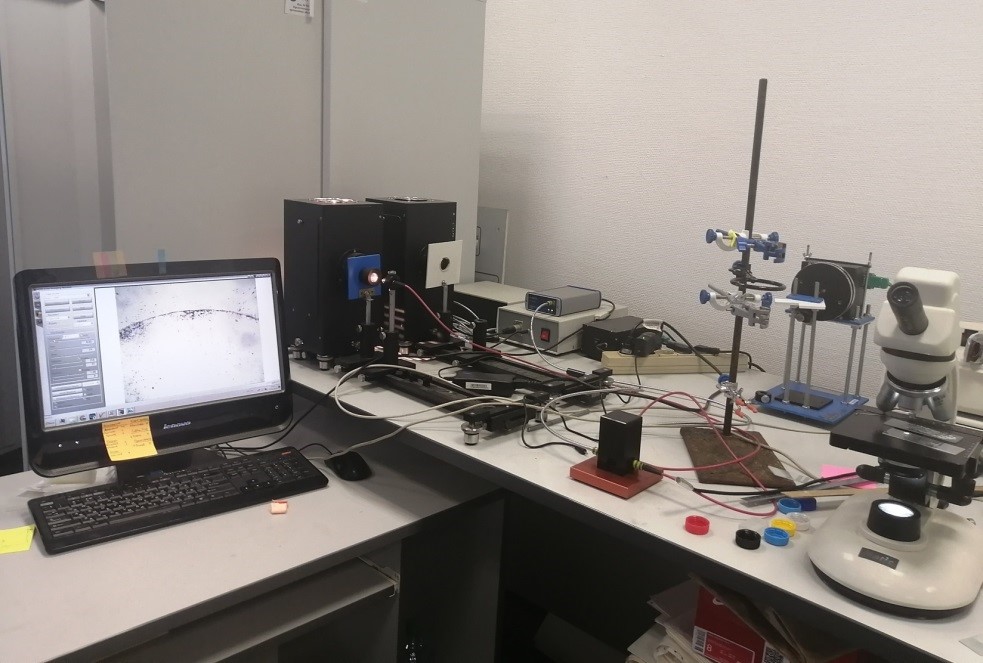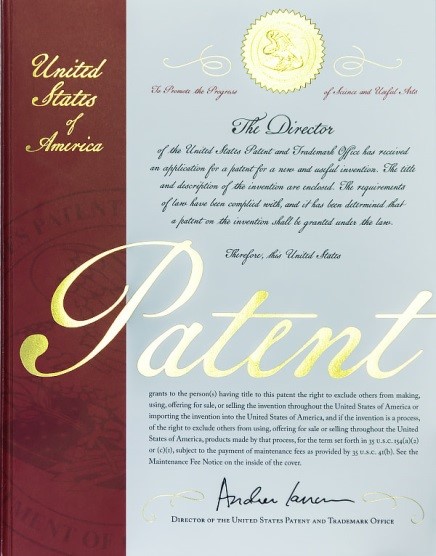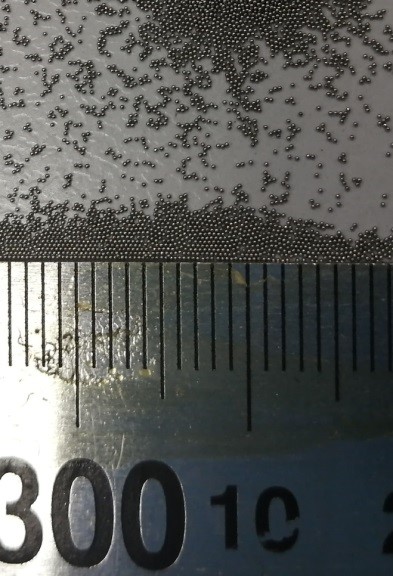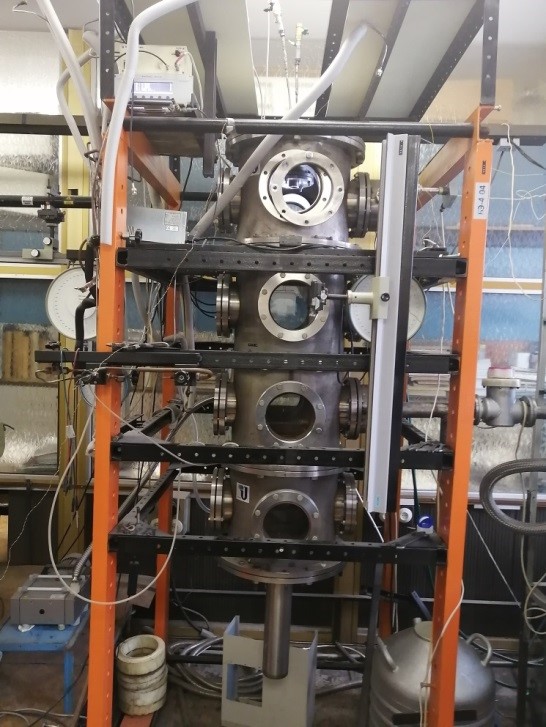
|
Experimental setup for investigation
of the microstructure of deposited particles
Dmitriev, A.S., Ivlev, N.F.,
Makarov, P.G. Evaporation rate management using substrates with graphene
nanoflakes coating // Materials Science Forum, 2020, 992 MSF, стр. 802-808
https://www.scientific.net/MSF.992.802
Makarov, P.G.,
Artamonov, A.V., Dmitriev, A.S. Study of the Leidenfrost Effect on
Heterogeneous Surfaces of Complex Structure. // Journal of Physics: Conference Series, 2039
(2021), 012017.
|

|
Experimental platform for the manufacture and research of hybrid graphene nanocomposites
Dmitriev, A.S. Non-trivial capillary hydrodynamics and strong evaporative cooling in multilayer two-dimensional materials: application in thermal management systems of electronic and energy devices. // Journal of Physics: Conference Series, 2039 (2021) 012008.
Babenko D.D., Dmitriev A.S. and Mikhailova I.A. Active thermal interface graphene nanocomposites for thermal control of electronic and power devices. // Journal of Physics: Conference Series, 2150 (2021) 012008.
Babenko, D.D., Dmitriev, A.S., Mikhailova, I.A. On the dynamic effects of evaporation and boiling of drops on inhomogeneous graphene substrates for effective thermal management of energy devices. // Journal of Physics: Conference Series, 2039 (2021) 012002.
|
 
|
Installation for production of
monodisperse granules from rare earth metal alloys
Ankudinov V. B., Marukhin
Yu. A., Ogorodnikov V. P., Ryzhkov V. A. Influence of the
Properties of Regenerative Heat Exchanger Packing Material on the Efficiency of
a Gifford–Mcmahon Cryocooler // Chemical and Petroleum Engineering, 2019, V.
55, Issue 1–2, pp. 136–141. https://doi.org/10.1007/s10556-019-00593-x
Ankudinov V. B., Marukhin
Yu. A., Ogorodnikov V. P., Ryzhkov
V. A. Technology for Production of Monodisperse Spherical Granules.
// Metallurgist
2019, Volume 63, Issue 5–6, pp 651–657 https://doi.org/10.1007/s11015-019-00903-x
US 10,456,837 B2 Method For Producting Monodisperse
Spherical Granules
|

|
Experimental installation for research of thermo-physical problems of cryogenic corpuscular targets.
In general, cryogenic corpuscular targets are a stream of solid identical granules from cryogenic liquids, having the following unique properties: high luminosity, small size (from 10μ to 100 μ), low dispersion in speed and size of granules (less than 1%), renewable capacity. Targets can be produce from hydrogen or its isotopes, nitrogen, argon, neon, krypton and xenon.
Due to their unique properties, the cryogenic corpuscular targets are promising in the study of fundamental problems of nuclear physics. Targets of this type are already part of the following scientific programs: «WASA CELSIUS» (Sweden); research program on the proton accelerator in ITEP(Moscow) and a number of others. In recent times the creation of cryogenic corpuscular targets is planned on the accelerators in Julich, Germany, and Lanzhou, China. In addition, the cryogenic corpuscular target is considered to be the most important element of future experiments on the new European accelerator FAIR (Facility for Antiproton and Ion Research - FAIR) in Darmstadt, Germany. The experiments are expected to be conducted with high-energy beams to 15 GeV and will be a supplement to research on the Great Hadron Collider at CERN.
The use of a cryogenic corpuscular target as an element of laser technologies will allow: to study the substance in an extreme state; to create compact accelerators of charged particles (electrons, protons and heavy ions);to produce isotopes and to develop new methods in nuclear medicine; to create the new radiation sources for micro and nano-electronics.
The main termo-physical problems affecting the production of stable monodisperse streams of droplets and granules (targets) from cryogenic liquids are: capillary decay of thin jets of liquid cryoagent, cooling and freezing of droplets, acceleration of droplets by gas flow.
The experimental installation has been created in order to investigate thermo-physical problems affecting obtaining stable monodisperse flows of droplets and granules. The installation consist of the following systems: vacuum system, working fluid supply system, monodisperse drop generation system and measuring system. Studies are carried out on special model liquids similar to cryogenic liquids in their parameters.
Works on creation of installation were supported only by the international grants, grants of the Russian Fundation for Basic Research (RFBR) and personal funds of participants of works.
• PANDA Phase One: PANDA collaboration. / Barucca, G., Boukharov A.V. Davi, F., Lancioni, G., ...Lutz, M.F.M., Ryan, S.M. // European Physical Journal A , 2021, 57(6), 184.
• The potential of Λ and Ξ studies with PANDA at FAIR. / Barucca, G., Boukharov A.V. Davi, F., Lancioni, G., ...Zimmermann, S., Zmeskal, J. // European Physical Journal A, 2021, 57(4), 154.
• Study of excited Ξ baryons with the P‾ ANDA detector. / Barucca, G., Boukharov A.V. Davi, F., Lancioni, G., ...Marton, J., Zimmermann, S. // European Physical Journal A, 2021, 57(4), 149.
• Feasibility studies for the measurement of time-like proton electromagnetic form factors from p‾ p> μ+μ- at P‾ ANDA at FAIR. / Barucca, G., Boukharov A.V. Davi, F., Lancioni, G., ...Zimmermann, S., Zmeskal, J. // European Physical Journal A , 2021, 57(1), 30.
|